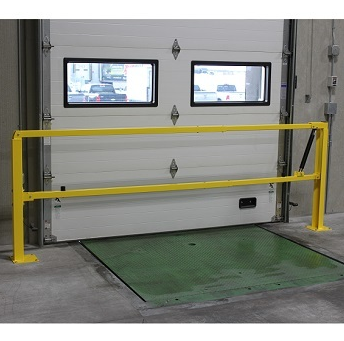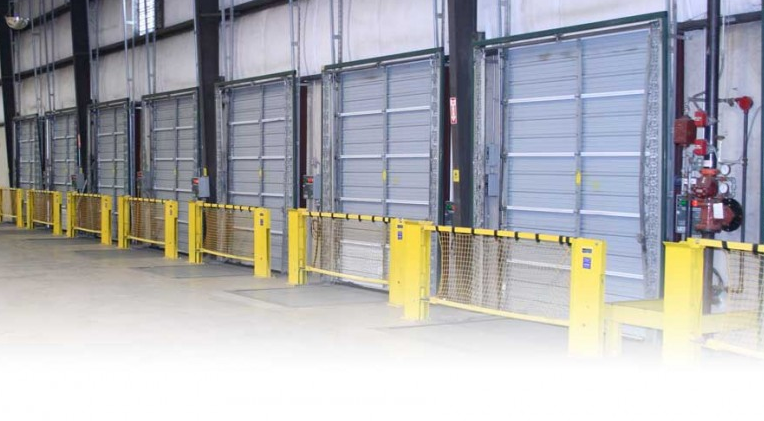OSHA standards for dock doors encompass specific requirements, safety features, and regular maintenance protocols to ensure workplace safety.
OSHA Standards Overview
The Occupational Safety and Health Administration (OSHA) plays a pivotal role in ensuring workplace safety in the United States. The overview of OSHA standards provides insights into the history, objectives, and the significant role that OSHA plays in maintaining safety standards across various industries, including those related to dock doors.

History and Development of OSHA Standards
The inception of OSHA can be traced back to the Occupational Safety and Health Act of 1970. This act was a response to the rising number of occupational injuries and fatalities. It aimed at ensuring employers provide employees with an environment free from recognized hazards, such as exposure to toxic chemicals, excessive noise levels, mechanical dangers, heat or cold stress, or unsanitary conditions. The development of OSHA standards has evolved over the years, adapting to new technologies, industry practices, and emerging hazards. OSHA’s History is a testament to its ongoing commitment to safeguarding worker’s rights and well-being.
Key Objectives of OSHA Standards
The primary objectives of OSHA standards are to protect the health and safety of employees and to ensure a safe and healthy working environment. These standards set the minimum requirements that employers must follow to safeguard their workers against health and safety hazards. The objectives also include reducing workplace accidents and illnesses, promoting safer workplace practices, and encouraging continuous improvement in workplace safety and health. OSHA achieves this through regulation, inspection, compliance assistance, and training. Here you can find more about the key objectives of OSHA standards.
The Role of OSHA in Workplace Safety
OSHA’s role is multifaceted, encompassing the development and enforcement of safety and health regulations across various industries. OSHA conducts inspections, offers training and education, establishes partnerships and alliances, and encourages continual improvement in workplace safety and health. OSHA also plays a vital role in responding to worker complaints and reports of workplace hazards. Additionally, it fosters a culture of safety and health by enforcing compliance with its standards and regulations, thereby reducing workplace fatalities, injuries, and illnesses. For detailed information on OSHA’s role, refer to OSHA’s Role in Workplace Safety.
Specific OSHA Standards for Dock Doors
Addressing a crucial component in workplace safety, OSHA has formulated specific standards tailored to dock doors. These standards encompass general requirements, safety features and devices, and maintenance and inspection protocols, providing a comprehensive framework to ensure the safety of workers and the efficiency of operations at docks.
General Requirements for Dock Doors
OSHA outlines several general requirements for dock doors to ensure they meet the essential safety standards. These include the design and materials used for the doors, ensuring they are durable and can withstand the daily wear and tear associated with industrial use. The installation process also falls under scrutiny, emphasizing proper fitting and alignment to prevent accidents. Additionally, the general requirements address the overall structural integrity and functionality of dock doors, ensuring they are capable of safeguarding workers and goods. More details on the general requirements can be found on OSHA’s General Requirements.
Safety Features and Devices
Safety features and devices are paramount in OSHA standards for dock doors. These include edge guards, which prevent accidental falls from dock edges, and visual and audible warning systems, alerting workers to potential hazards. Dock levellers and dock plates are mandated to be sturdy and reliable, ensuring smooth transition between the dock and vehicles. These features aim to minimize the risk of accidents and injuries, fostering a safer working environment around dock doors. For an extensive list of safety features and devices, you can refer to OSHA’s Safety and Health Regulations.
Maintenance and Inspection
Regular maintenance and inspection are vital components of OSHA’s standards for dock doors. Employers are required to schedule regular inspections to identify and address potential issues promptly. Maintenance procedures must be thorough, ensuring all components of the dock doors are in optimal condition. Record keeping is also emphasized, requiring meticulous documentation of maintenance and inspection activities, facilitating transparency and accountability. Detailed information about maintenance and inspection standards is available at OSHA’s Inspection Procedures.
Hazard Assessment and Control
Focusing on proactivity, OSHA emphasizes the significance of Hazard Assessment and Control in preventing workplace incidents. This process involves identifying potential hazards associated with dock doors and implementing appropriate control measures to mitigate risks, thereby ensuring a safer working environment.
Identifying Potential Hazards
A critical first step in hazard assessment is the identification of potential hazards. This involves a thorough evaluation of the work environment, equipment, and operational procedures associated with dock doors. Employers should assess risks such as equipment malfunction, employee errors, and environmental factors that might compromise safety. The assessment should also consider unique risks associated with dock doors, such as falls, crush injuries, and equipment collisions. By identifying these hazards early, employers can take proactive measures to prevent accidents and injuries. For more insights on hazard identification, you can visit OSHA’s Hazard Identification.
Implementing Control Measures
Once potential hazards have been identified, the next step is to implement control measures to mitigate these risks. OSHA recommends a hierarchy of controls, which prioritizes elimination, substitution, engineering controls, administrative controls, and finally, Personal Protective Equipment (PPE). Engineering controls may involve modifying equipment or installing safety features, while administrative controls focus on changing work practices and providing employee training. The use of PPE is essential in protecting workers from exposure to hazards when other controls are not feasible. More detailed information on control measures can be found at OSHA’s Hierarchy of Controls.

Compliance and Enforcement
Adherence to OSHA standards is crucial, and understanding the mechanics of Compliance and Enforcement helps in ensuring a safe workplace. This section outlines the procedures followed by OSHA during inspections, the penalties associated with non-compliance, and the balance of responsibilities and rights attributed to employers.
OSHA Inspection Procedures
When OSHA conducts inspections, the process is thorough and systematic. The organization prioritizes inspections based on reported incidents, employee complaints, and industries with high-risk profiles, such as those involving dock doors. Inspectors review records, examine the work environment, interview employees, and assess compliance with safety standards.
Penalties for Non-compliance
Non-compliance with OSHA standards results in penalties, which can be severe, depending on the nature and severity of the violation. Fines are imposed, and in cases of serious breaches, operations can be halted until compliance is achieved. The goal of these penalties is not punitive but corrective, aiming to motivate employers to prioritize employee safety and adhere to prescribed standards. Details on the range and structure of penalties can be found at OSHA’s Penalties.
Employer Responsibilities and Rights
Employers bear the primary responsibility for ensuring a safe and healthy work environment. They are obligated to comply with OSHA standards, provide necessary training, and promptly address identified hazards. Employers also have the right to seek clarifications on regulations, request compliance assistance, and contest citations. Balancing responsibilities and rights is essential for fostering cooperation between OSHA and employers, leading to improved workplace safety. For more on employer responsibilities and rights, visit OSHA’s Employers’ Rights and Responsibilities.
